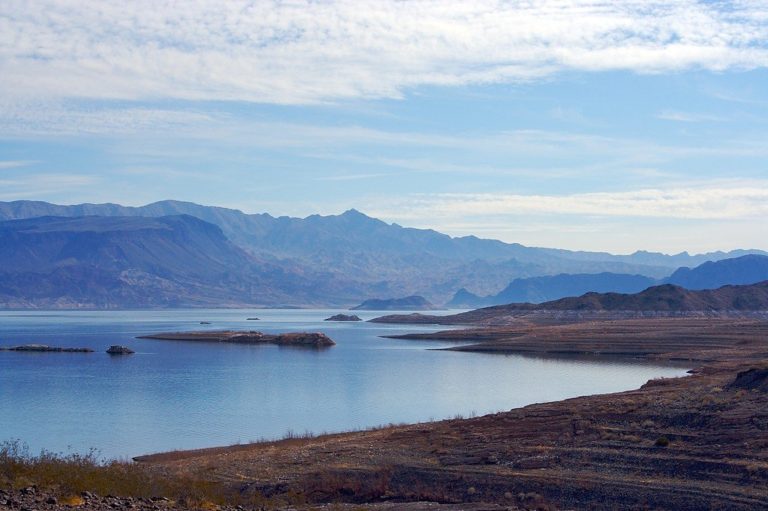Hydropower is NOT Clean Energy: Dams and Reservoirs are Major Drivers of Climate Change
By: Kate Hudson

On November 8, 2017, the House of Representatives approved a bill, H.R. 3043, that defines hydropower as a renewable energy source and fast-tracks the licensing of large, taxpayer-funded hydro-projects, claiming that the concentration of licensing power in the hands of one federal agency—the Federal Energy Regulatory Commission (FERC)—will boost a clean source of energy.
So, is hydropower renewable? Reservoirs and hydropower are often thought of as “clean energy” because they don’t burn fossil fuels to produce electricity. But what if reservoirs that store water and produce electricity were among some of the world’s largest contributors of greenhouse gas emissions?
There are many reasons why hydropower is not clean energy. Research released within the last year has confirmed that dams and reservoirs are a major source of greenhouse gas emissions driving climate change. Until recently, it was believed that about 20 percent of all man-made methane emissions came from the surface of reservoirs. A study published in BioScience in late 2016 determined that dams and reservoirs contribute to global warming 25% more than previously estimated.The study’s authors, from U.S., Canadian, Chinese, Brazilian and Dutch universities and institutions, calculated that reservoirs are emitting the equivalent of one gigaton—or one billion tons—of carbon dioxide into the atmosphere every year. That is more greenhouse gas production than the entire nation of Canada and just under the amount of greenhouse gas emissions attributable to Brazil, number 7 on the top-10 list of greenhouse gas emitters, behind China, the EU and the United States.
Even more concerning from a climate change perspective is that 79% of the greenhouse gas emissions from reservoirs are methane—a greenhouse gas with a relatively short life in the atmosphere but a very strong warming effect in the short term. Methane is about 35 times more potent a greenhouse gas than carbon dioxide over the span of a century, but 86 times more potent in accelerating climate change over a decade or two—a critical time period in the effort to slow down the effects of climate change before it is too late.
And it is not just hydroelectric facilities that are contributing to these large, previously unaccounted for emissions of greenhouse gases—it is all artificial dams and reservoirs, whether their purpose is electricity generation, irrigation, flood control, or other human needs. A global boom in construction of new hydroelectric projects and reservoirs over the next 15 years could double the current cover of dams in the world, leading to more than 90% of the world’s rivers being fragmented by at least one dam and significantly increasing greenhouse gas emissions it is now understood dams and reservoirs are generating.
And how is this previously underestimated source of greenhouse gases driving climate change? Reservoirs are a classic example of how major human alterations to the Earth’s landscape can have unexpected effects. Damming rivers creates the perfect conditions for microorganisms to generate greenhouse gases which bubble up to the surface of the reservoir and are released into the atmosphere through three separate mechanisms.
First, the building of massive dams and reservoirs results in flooding vast areas of land all at once that contain large amounts of organic life. In the oxygen-poor environment that results, methane-generating microbes feed on decaying algae. Second, rivers continue to flow into reservoirs delivering not only significant amounts of organic matter and sediment from upstream, but also nutrients like nitrogen and phosphorus from agricultural activities, fertilizers, and human waste, driving algae growth and providing even more material for microbes to break down and convert to methane. And third, reservoirs experience greater fluctuation in water levels than natural lakes. Drops in water levels increase the amount of methane bubbling released into the atmosphere. The result? As described by publication Science Alert: “…if we’ve deliberately flooded areas of land to generate energy, irrigate our crops, or perform flood control, we’re contributing to the accelerated warming of the planet.”
Before the extent of greenhouse gas emissions from the construction of dams and reservoirs was more fully understood, focus has been on the enormous adverse impacts of dams on fish, water quantity, nutrient loading, and riverine ecosystem dynamics. But new information on the role of hydro-dams and reservoirs as a source of significant greenhouse gas emissions has made clear that they are also not the “green,” carbon-neutral sources of energy we once thought—and hoped—they were. To quote Philippe Van Cappellen, co-author of a 2017 Canadian study on the impacts of reservoirs on the world’s carbon cycle and climate system,“Dams don’t just have local environmental impacts. . . . they play a key role in the global carbon cycle and therefore the earth’s climate.”
In the face of this new and compelling information about the impact of dams on climate change, why would we want to facilitate and fast-track the construction of even more massive hydropower projects at significant taxpayer expense? This is the goal of H.R. 3034 and its companion in the Senate, the hydroelectric provisions of S.1460. The only winners, if the Senate bill is passed and these fast-tracking hydropower provisions become law, are the corporations whose desire to exploit our rivers for profit is being elevated above the public interest. Instead of a massive giveaway to those industry interests that will hasten climate change, we must urge our Senators to reject S.1460 and focus their support on truly carbon-free, clean energy solutions to the ever-growing, existential threat of global climate change.
*Photo of Lake Mead, a reservoir that was created by damming the Colorado River, by William Klos